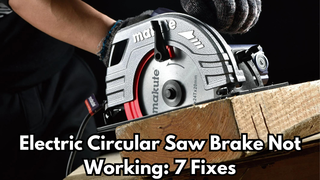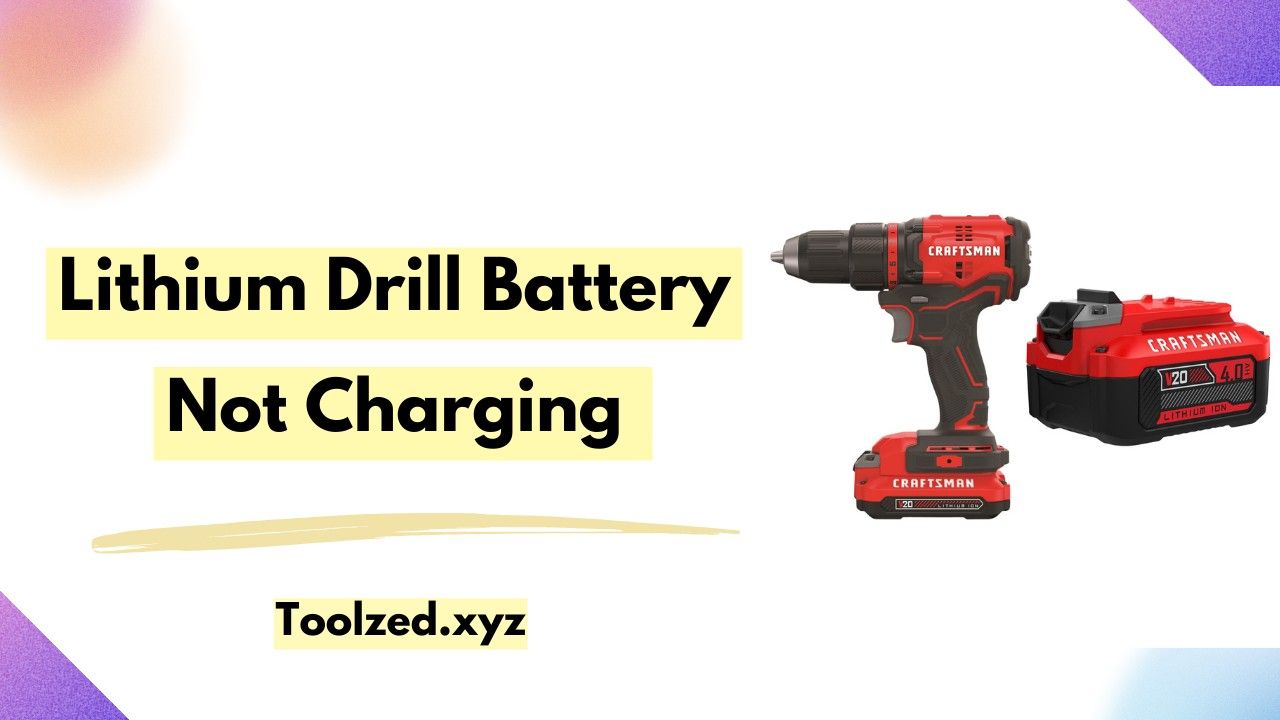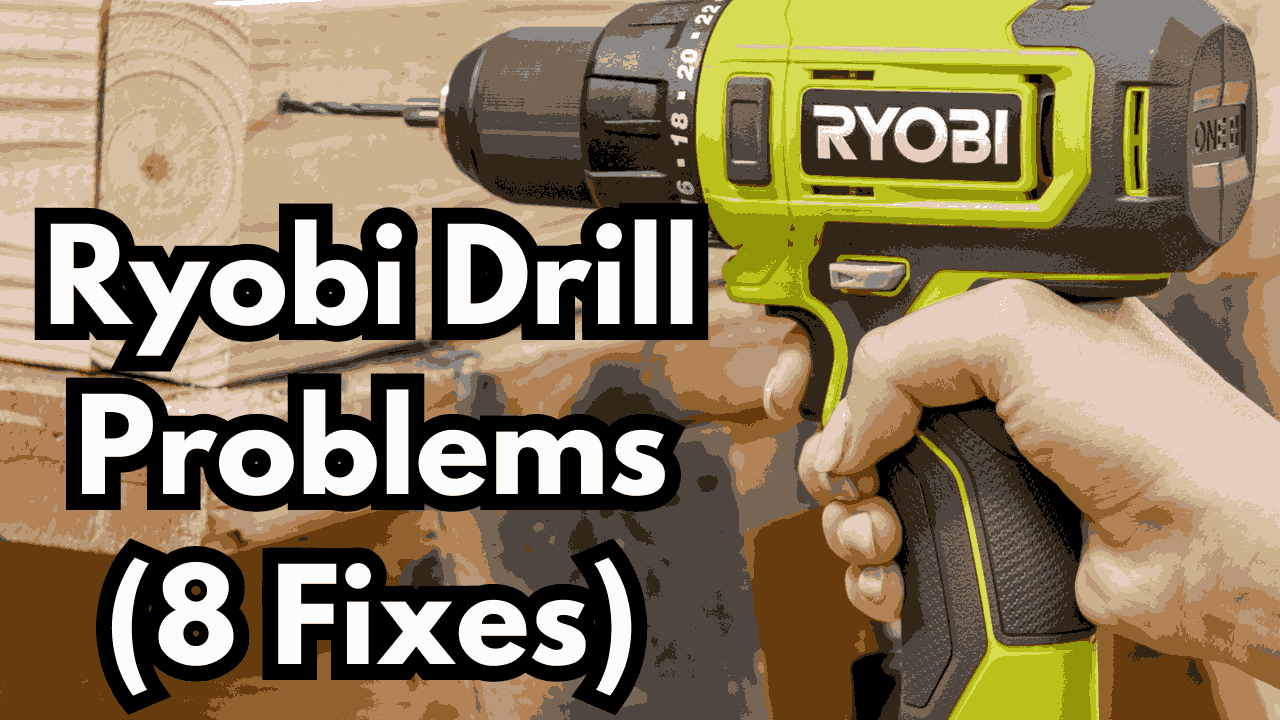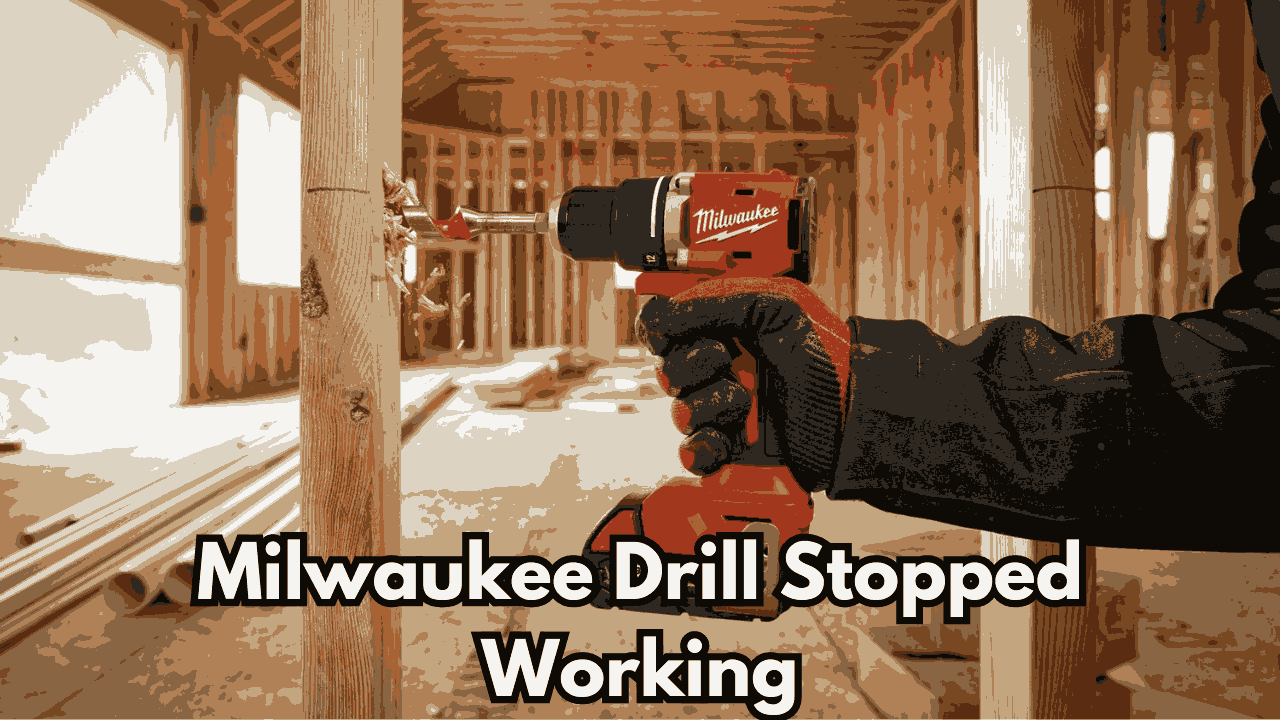An electric circular saw is a powerful tool that allows quick and precise cutting of wood, metal, or other materials. With its sharp blades and high-speed motor, it can make any cutting job effortless and efficient.
However, one common issue that circular saw users may encounter is the brake not working properly.
A functioning brake is essential for safety when using a circular saw. It helps to stop the blade from spinning immediately after releasing the trigger, preventing potential injuries or accidents.
If you find that your electric circular saw’s brake is not working correctly, don’t worry. In this guide, we will discuss seven fixes for an electric circular saw brake not working.
Causes of Electric Circular Saw Brake Not Working
Before we dive into the solutions, it’s crucial to understand what could be causing the brake on your electric circular saw to malfunction. Knowing the root cause can help you determine which fix is suitable for your specific situation.
Here are some common reasons why an electric circular saw’s brake may not be working correctly:
- Worn Out Brake Pads: The most common reason behind a faulty brake is worn out or damaged brake pads. These pads are responsible for creating friction and stopping the blade from spinning.
- Damaged Brake Mechanism: The brake mechanism in a circular saw is made up of several components that work together to stop the blade. If any of these components, such as the brake assembly or pivot pin, are damaged or worn out, it can affect the brake’s performance.
- Dirty or Clogged Brake Components: Dust, debris, and sawdust can accumulate in the brake mechanism over time, affecting its effectiveness. It can also prevent the brake pads from making proper contact with the blade.
How To Fix Electric Circular Saw Brake Not Working
Now that we know what could be causing the problem let’s explore seven potential fixes for an electric circular saw brake not working.
1. Clean and Lubricate Brake Components
As mentioned earlier, dust and debris can build up in the brake mechanism over time. This buildup can prevent the brake pads from making proper contact with the blade, resulting in a faulty brake. In this case, cleaning and lubricating the brake components may solve the issue.
To do this:
- Unplug the saw from its power source.
- Remove any debris or sawdust from the brake mechanism using a brush or compressed air.
- Wipe down the brake pads and other components with a clean cloth.
- Apply lubricant to the moving parts of the brake, such as the pivot pin and lever.
- Reassemble the saw and test the brake.
2. Replace Worn Out Brake Pads
If cleaning and lubricating the brake components did not solve the issue, it may be time to replace the brake pads. Over time, these pads can wear down due to regular use, affecting their ability to create friction and stop the blade.
To replace the brake pads:
- Unplug the saw from its power source.
- Remove any screws or bolts holding the brake assembly in place.
- Remove the old brake pads and replace them with new ones.
- Reassemble the saw and test the brake.
3. Check for Loose or Broken Parts
As mentioned earlier, regular use of a circular saw can cause parts to become loose or break off. If this is the case with your saw’s brake, you will need to replace or tighten the affected part.
To do this:
- Unplug the saw from its power source.
- Inspect the brake mechanism for any loose or broken parts.
- If you find any, replace or tighten them according to the manufacturer’s instructions.
- Reassemble the saw and test the brake.
4. Adjust Brake Tension
In some cases, the tension on the brake may be too loose or too tight, affecting its performance. If this is the case, you can adjust the tension to fix the issue.
To do this:
- Unplug the saw from its power source.
- Locate the tension adjustment knob on your saw’s brake assembly.
- Turn the knob in either direction to increase or decrease the tension.
- Reassemble the saw and test the brake.
5. Replace Fuse or Switch
If you suspect that an electrical issue is causing the brake not to work, you may need to replace the fuse or switch.
To do this:
- Unplug the saw from its power source.
- Check the fuse and switch for any signs of damage or malfunction.
- If necessary, replace them according to the manufacturer’s instructions.
- Reassemble the saw and test the brake.
6. Clean and Replace Brushes
If your circular saw has carbon brushes, they may become dirty or worn out over time, affecting the saw’s electrical system and brake. In this case, cleaning or replacing the brushes may solve the issue.
To do this:
- Unplug the saw from its power source.
- Locate the carbon brushes on your saw’s motor.
- Remove them and clean off any debris or buildup.
- If the brushes are worn down, replace them with new ones.
- Reassemble the saw and test the brake.
7. Seek Professional Help
If you’ve tried all the suggested solutions and still find no improvement, it might be the right moment to consider seeking professional assistance.
Consulting with a trained technician can be a game-changer, as these experts possess not only the necessary expertise but also a comprehensive set of tools specifically designed to accurately diagnose and efficiently resolve any underlying issues that might be affecting the brake of your electric circular saw.
Their in-depth knowledge and experience can ensure that your tool is returned to its optimal working condition, saving you time and possibly even money in the long run.
Conclusion:
The brake is an essential safety feature in an electric circular saw, and it’s crucial to ensure that it’s working correctly before using the tool.
By understanding the potential causes of a faulty brake and trying out the suggested fixes, you can get your saw back in working order and continue with your woodworking projects safely.
Remember to always prioritize safety when handling power tools, and never hesitate to seek professional help if needed. Happy sawing!







